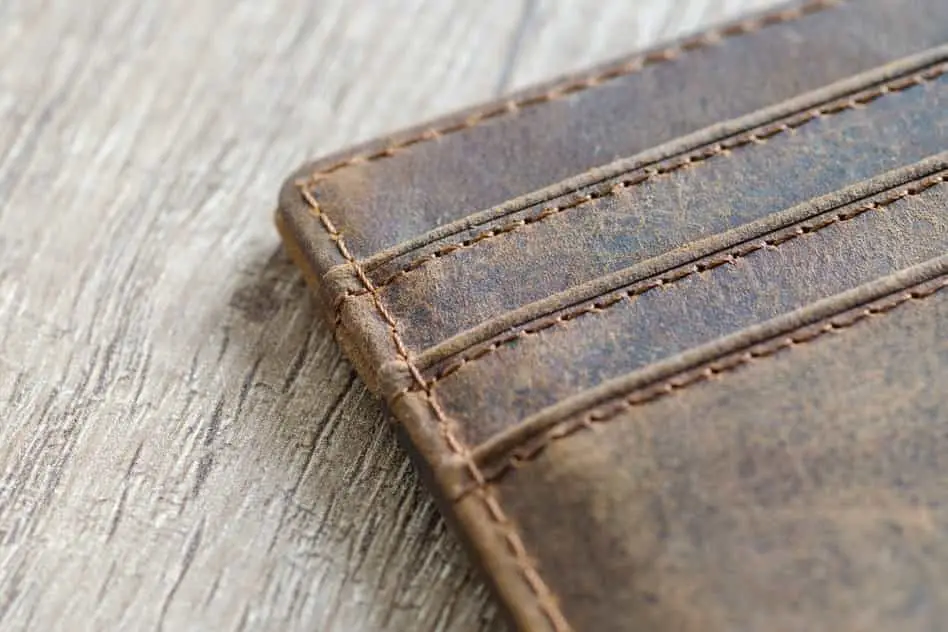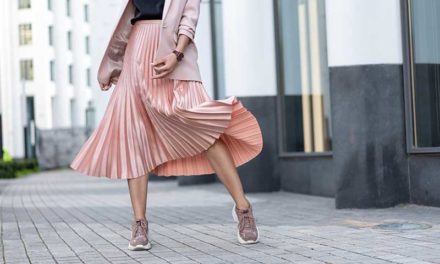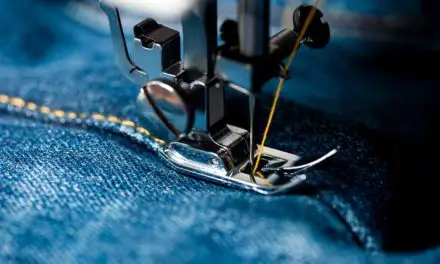Many people don’t know it, but with a few modifications, most sewing machines can sew leather. It needs different accessories and needles but the process is extremely similar to sewing on cotton.
Here are a few tips that’ll make the project much easier.
What you’ll need
Sewing Machine
This should go without saying, but there are a few options here. You can buy a leather sewing machine, or make do with a heavy duty machine. Standard household sewing machines aren’t recommended for the job, but if you’re on a tight budget then go for it.
18 Gauge Needles
With a standard sewing machine, you will need some upgrades. The first things to buy are bigger and better needles. Try getting leather needles, or get 18 gauge needles. Both work fine. The needles need to be tougher and stronger. Getting a nylon thread is also a good idea.
Teflon Presser Foot
The regular presser foot on your machine isn’t meant for leather. Try getting a Teflon, roller, or walking a/even-feed foot. These allow the leather to glide through the foot without sticking. Putting washy tape under the foot is a lower-budget option.
Tape or Paper Clips
Most people like to use pins to hold the fabric down or to mark patterns. You shouldn’t forget that this is leather and any pins will leave permanent holes. Try using tape or paper clips to hold the fabric in place while you’re working on it. It’s much more secure and it won’t leave a mark.
Tips for Sewing Leather on a Sewing Machine
Once you’ve got all your materials together, sewing leather isn’t any different than sewing cotton. You work the machine the same way, thread it the same, and even apply the same force on the pedal.
But there are a few tips and tricks that will make leather sewing easier, if not better. From the seam size, the type of thread you use, and even the way you mark patterns. Follow the tips below carefully. And remember to adjust things according to taste and comfort.
Draw your Pattern On The Wrong Side
Most people like to trace the pattern of how they wish to cut the cloth. This is all fine and dandy. Except on leather, the marks can be harder to get rid of. So you might want to trace all patterns on the underside of the cloth.
In this way, your pattern won’t show when the clothing is ready to wear. It is important to use marking pens or chalk for the tracing. Use a rotator cutter or heavy duty scissors for all the cutting.
Try Different Seams
The best part about sewing with a machine is that you get tons of options. Try sewing with different seam sizes and styles. Try lapped seams if you don’t want frayed ends and hate the bulky edges that stick out.
Or try your hand at topstitches for a more secure seam. The choices are endless. You can even make double seams on leather. The most important part about learning to sew on a different fabric is getting familiar with it.
So go wild and try as many seams as you can (on a spare piece of leather).
Make Use Of Nylon Or Polyester Threads
Since you had to change the needle, you can only assume that the thread needs changing too. For leather, a nylon or polyester thread is recommended. This thread is stronger, thicker, and will pass through leather easily. These don’t even cost more than an average cotton thread.
Remember to always add the same color and type of threads in both the spool and the bobbin. Cotton thread is actually discouraged for leather. This is because the thread won’t last and will degrade over time. In short, nylon or polyester thread is best.
Use A Wider Stitch
As I said, stitch and seam options are endless. But if you want to know what’s recommended for leather, then it’s a wide stitch. You can set your machine anywhere between 3 and 4. Those are usually the longest lengths for stitches. Of course, the numbers can differ from machine to machine.
But generally, try to make sure that the stitch is wider than usual. Say, 3 to 4 mm wide at least. This will ensure that the leather will stay together for longer. You can also try topstitches and double stitches. But remember to keep the stitch wider than usual.
Make Topstitches and Double Stitches
A topstitch is recommended when working with leather. In this way, the clothes and projects you make will be flatter and easier to press. Unlike cotton, the edges of the seams will tend to stick out so topstitch is ideal.
Before you begin, remember to cut the seam allowance significantly. This will reduce how much of it sticks out. You can also try double stitching for a stronger and more reliable stitch. Double stitching is recommended for cotton cloths too.
Plain single stitches are discouraged, especially on leather or polyester. This will make it easier for the seams to just come undone.
Practice, Practice, Practice
Last but not least, practice as much as you can. I would recommend starting off on a spare piece of leather and trying out all your materials on it. Try different seams, like lapped seams or double stitches. Experiment with pattern cutting and stitch sizes. Even if you’re familiar with all that when working on cotton, leather is different.
Final Thoughts
Leather may be tough, but our sewing skills are tougher. By using the proper tools and doubling every stitch sewing leather, modern sewing machines are more than capable of sewing leather.





